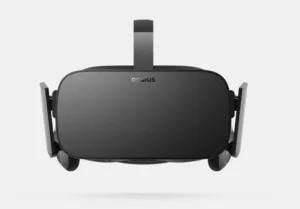Besides the number of big names jumping into the augmented and virtual reality markets, market success has been very limited. Virtual reality has been more of a future thing than a business success today. The biggest name in it all is, of course, Facebook with its subsidiary Oculus aiming at revolutionizing the gaming industry and maybe the social platforms too. From a business perspective this is something that could gain the interest of Wall Street in coming years.
Source: Oculus
In a recent article by Jason Derrick published by Benzinga, he summarized a multitude of events including the announcement of a 50% price cut for the Gear VR and a coverage by analysts about the growing content for VR applications. This relates to the partnerships Oculus has created with Netflix, Hulu, Tivo, Sega and Midway to bring content to the Gear VR.
The article includes a forecast by Gene Munster from Piper Jaffray that Facebook will sell 3 million Oculus devices in 2016 adding $1.2 billion to the 2016 revenue. Interestingly this would mean that they expect that the Oculus Rift will sell for $400 a piece next year, which is in contrast to reports from June of this year that the expected sales price will be $1,500 per unit. Why would they underestimate the potential revenue impact by a factor of almost four?
The article also quotes Ben Schachter of Macquarie Research as saying that he is very bullish of augmented and virtual reality as being the “next major computing platform”. He does admit that it may take some time to get there. Without a clarification on what that ‘some time’ is, this is a very vague statement indeed.
Analyst Comment
Everyone following the AR and VR development in recent years knows that this technology has made great promises as the nirvana of technology. Every type of content will be available at the end of the consumer’s fingertips. Possible consequences for content creation, distribution and consumption will be huge. As a result, everyone is trying to put stakes in the ground to allow them a piece of the action, avoiding the smartphone and tablet situation where Apple ran away with the prize early.
So, if the technology companies are so convinced that AR / VR is the future of mobile display technology, why is so little money flowing into required research for suitable display technology? Also, most of the companies investing and associating with AR / VR today are not the drivers in display technology or optical solutions today.
There seems to be some disconnect between technical capabilities and expected performance of all kinds of smartglasses. Without significant research and development efforts, we will see repeats of the Google Glass failure again and again. So who is actually putting their research dollars and efforts into coming up with the technologies needed to create a head mounted display device that can do all those things the marketing videos are promising?
So far the most diligent AR / VR companies are the small companies such as Vuzix, ODG, and the like that are working on the development of the underlying technology and not at marketing functionality of a device that simply does not exist today. Looking at Oculus shows the technology gaps that exist between the first great prototype and a real consumer product. Let us wait for the final Oculus Rift device to see how well received this device will be, measured by sales volume.
Wall Street may want to see a new technology that drives stock values because this is how they make money. This does not seem realistic though. The Apple Watch sold millions of units on a monthly basis and is by most analyst considered not a product that can change the outlook on Apple’ stock significantly. How do they expect AR / VR will do this? Overall this seems to be more of an exercise in wishful thinking rather than market analysis. (NH)

